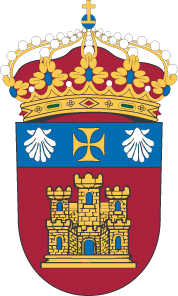Por favor, use este identificador para citar o enlazar este ítem: http://hdl.handle.net/10259/7886
Título
Tafonomía del registro fósil de macromamíferos del Pleistoceno Superior en el nivel 4 de la Cueva de Prado Vargas (Cornejo, Burgos, España)
Otro título
Taphonomy of the fossil record of macromammals of the Upper Pleistocene at level 4 of the Cueva de Prado Vargas (Cornejo, Burgos, Spain)
Publicado en
MUNIBE Antropologia-Arkeologia. 2020, n. 71, p. 5-21
Editorial
Sociedad de Ciencias Aranzadi
Fecha de publicación
2020-01
ISSN
1132-2217
DOI
10.21630/MAA.2019.71.02
Resumo
Las técnicas de subsistencia en grupos humanos del pasado se investigan en profundidad a través del estudio de las acumulaciones fósiles, de su formación, origen y composición. Los conjuntos faunísticos localizados en los yacimientos arqueológicos pueden reflejar el tipo de estrategias desarrolladas por los homínidos a través de disciplinas como la Zooarqueología y la Tafonomía. El presente trabajo analiza el conjunto faunístico del Nivel 4 de la Cueva de Prado Vargas (Cornejo, Burgos, España) con una antigüedad de 46.400 años BP (MIS 3). Este yacimiento se ha interpretado como lugar de ocupación recurrente donde procesaron los recursos cárnicos los grupos neandertales que habitan la zona sur de la Cordillera Cantábrica, quienes intercalan su presencia con otros predadores que aprovechan su ausencia en la cavidad para dejar su huella en el registro. As predators, humans used to transport part of their prey to safe places like caves. Not only these accumulations, but also their formation, origin and composition constitute a fundamental basis to explore the behaviour of the human groups and their interaction with environment. Zooarchaeology and Taphonomy are complementary disciplines that allow us to approach these objectives. In this study, the faunistic assemblage of level 4 of Prado Vargas cave (Cornejo, Burgos, España) is analysed. This site is localised between the Cantabrian cornice and the north Meseta with a dating of 46.000 years BP. This work focuses on the livelihood strategies and Neanderthal behaviour, especially the way in which their prey was exploited. The analysis of the existing marks on the bones tells us about access to external tissues (meat, tendons or skin), processing and consumption, as well as bone for other non-nutritive purposes. They also allow us to explore and the way of access to animals, allowing us to distinguish the ways of life groups of prehistoric hunters-gatherers. Furthermore, we focus on differentiating the agent responsible for the fracture, as well as the state of the bone at the time that this occurred studying the patterns of fracturing and the marks associated with the percussion, as well as different tafonomic processes. We have collected a series of data that are offered in this work. The level 4 of Prado Vargas has been interpreted as a place of recurring habitat for Neanderthals, who intersperse their presence with other predators who take advantage of their absence in the cavity to leave their mark on the record.
Palabras clave
Paleolítico medio
Zooarqueología
Tafonomía
Middle Palaeolithic
Zooarchaeology
Faunal Taphonomy
Materia
Arqueología-Burgos
Archaeology-Burgos
Prehistoria-Burgos
Prehistoric peoples
Versión del editor
Aparece en las colecciones
Documento(s) sujeto(s) a una licencia Creative Commons Attribution-NonCommercial-NoDerivatives 4.0 Internacional











